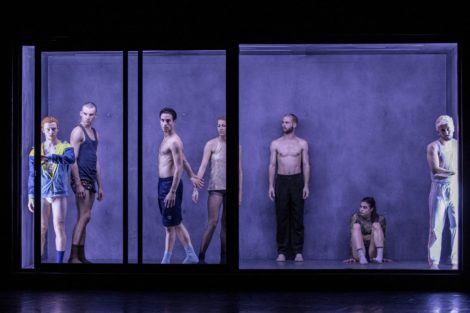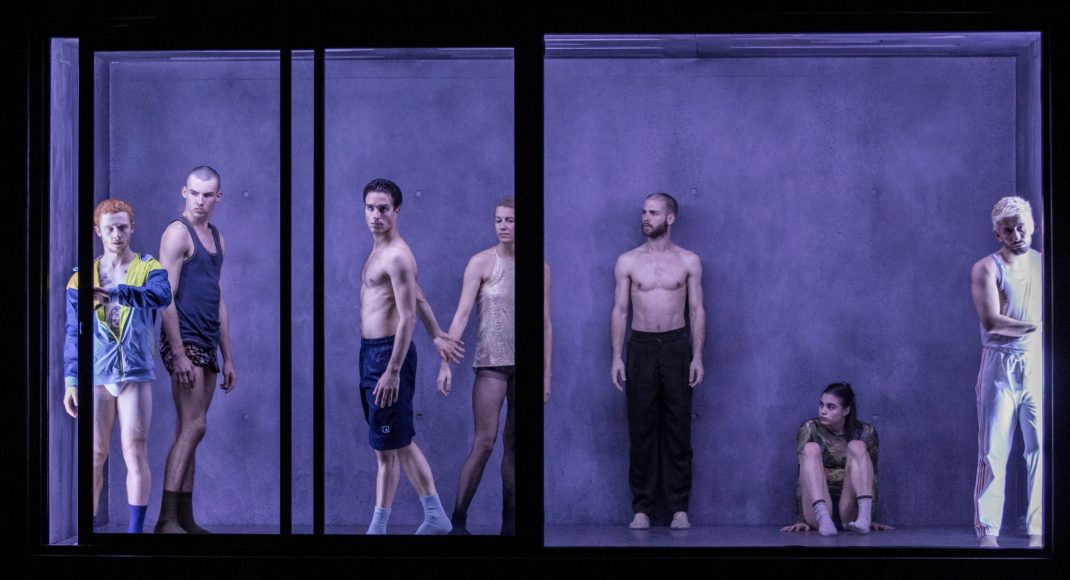An expanded version of my Canberra Times review of ORB is below. The shorter review is as yet unpublished. [Update: The review appeared in print on 2 June 2017. Here is a link to the online version]
Canberra Theatre, 25 May 2017
Full Moon, choreography Cheng Tsung-Lung, music Lim Giong, costume design Fan Huai-Chih, lighting design Damien Cooper. Ocho, choreography Rafael Bonachela, music Nick Wales featuring vocals by Rrawun Maymuru, costume and set design David Fleischer, lighting design Damien Cooper.
The dancers of Sydney Dance Company have once again stunned audiences with their extraordinary physical skills in a double bill program with the over-arching title of ORB. Explosive, athletic, swirling, superbly controlled, fast-paced, and many other expressions come to mind. Can their techniques get any better? I ask this question of myself every season and every season I ponder how they can continue to perform with such passion and power. ORB can give huge pleasure from thinking purely of the physical execution of the choreography.
But the program becomes totally fascinating if one delves a little further. Take Full Moon, which opens the program, for example. Each of the eight dancers in this work is dressed differently, and spectacularly so by Taiwanese fashion designer Fan Huai-Chih. And it turns out that each represents a different character associated in some way with the moon.
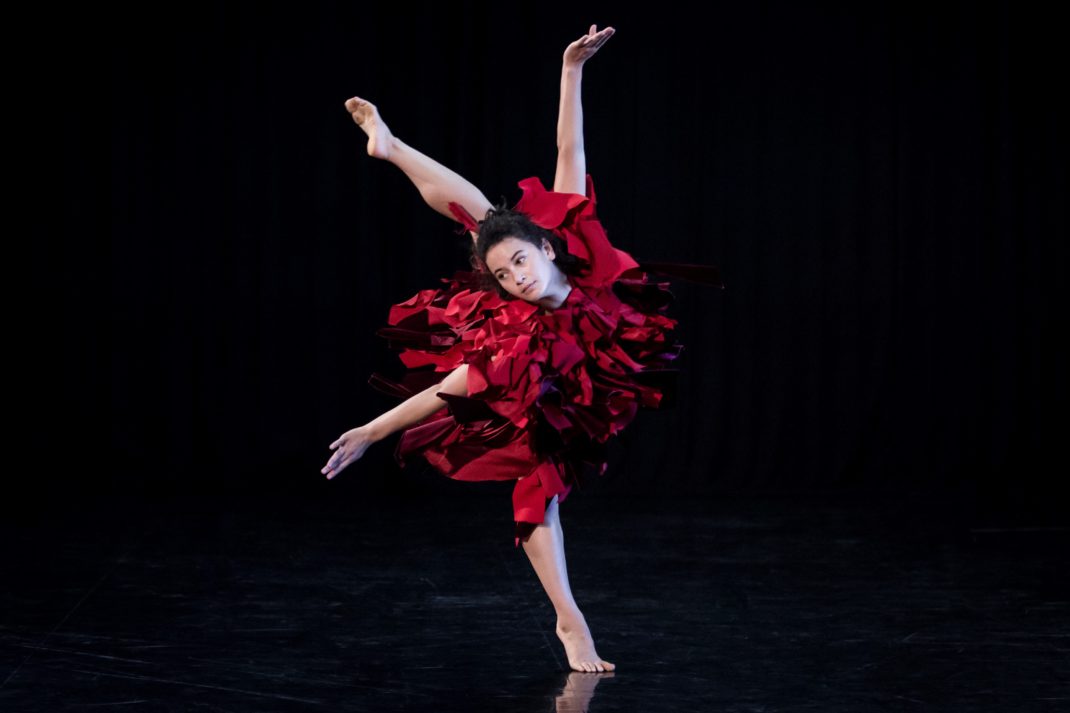
Latisha Sparks, dressed in a bright red, tiered and flounced dress (red being the colour of luck and happiness), represented a female warrior, with a nod to the Hindu deity Shiva who often is portrayed with a crescent moon on his forehead. Shiva is also said to have ‘matted hair’ and Sparks’ hair certainly looked rather tousled on the night I saw the show. Was she wearing a wig, I asked myself? Then, choreographically, Sparks’ continuous whirling arm and hand movements recalled the multiple arms of some representations of Shiva, and her writhing and rolling movements across the stage suggested engagement as a warrior in battle.
Jesse Scales was also fabulously dressed in a silvery-white dress of clean-cut but off-centre lines. She was the rabbit in the moon from Chinese mythology. Her movements were often tiny, darting and filled with small jumps.
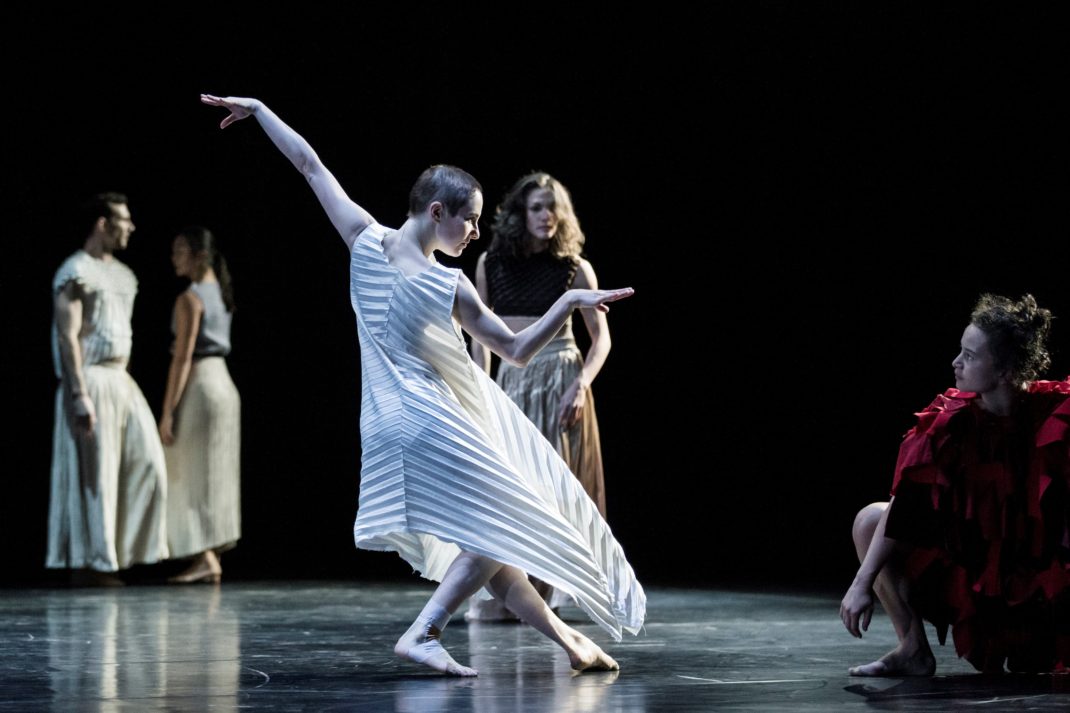
There was very little contact between each of the characters and, as they performed their individual dances, there was often stillness or just a hint of slow, controlled movement from the other characters. Bernhard Knauer in fact spent much of the time frozen in a meditative position.
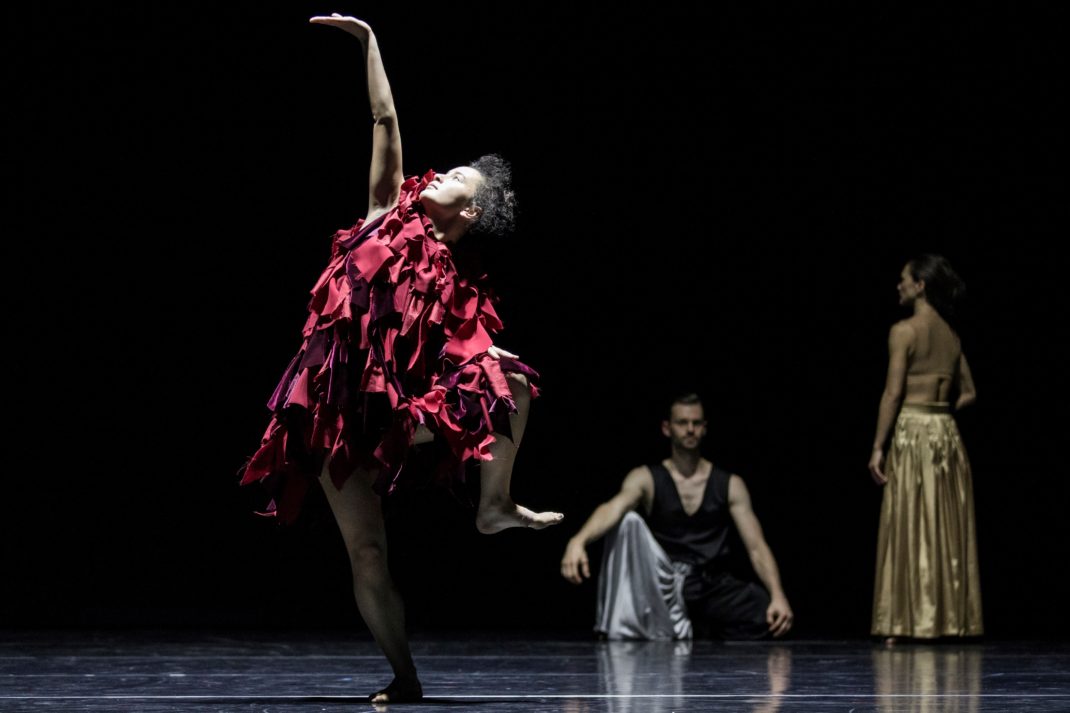
The whole work was ablaze with references to deities and mythological creatures, and was filled with juxtapositions of movement and stillness.
Ocho, on the other hand, did not focus on stillness, even though there were times when several of the dancers were enclosed inside David Fleischer’s industrial-looking concrete and glass box that comprised the set: they mostly watched other dancers performing outside the box. Bonachela made Ocho (eight in Spanish) in his eighth year as artistic director of Sydney Dance Company and has used eight dancers in the work. But, like most of Bonachela’s works, there is nothing particularly significant in a narrative sense about the title. Ocho, the work, is contemporary dance in which we are left to have an opinion of our own, which may or may not be the same as anyone else’s.
I found the work, with its grinding score by Nick Wales, and its often-gloomy lighting by Damien Cooper, unsettling and harsh. This feeling was perhaps accentuated because, while watching it, it was impossible not to be thinking of the capriciousness of Full Moon. As well, Ocho‘s down-to-earth costuming (by David Fleischer) couldn’t have been more different from that of Full Moon. But then Ocho was meant to have an industrial feel to it and it succeeded in doing just that.
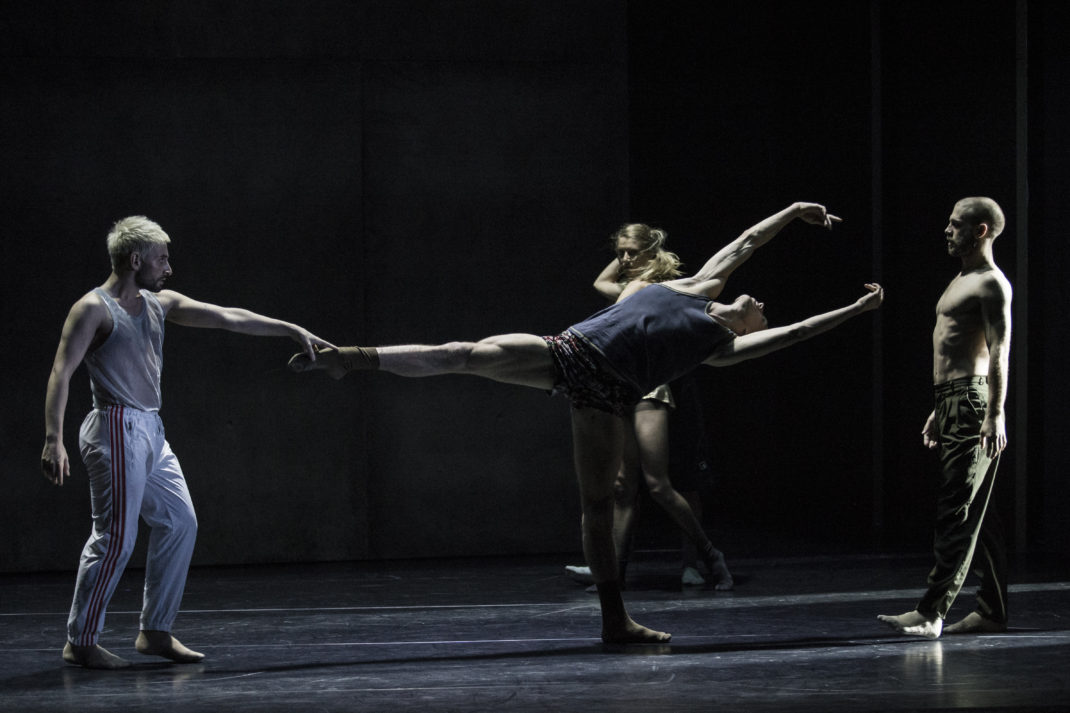
What was interesting was the fact that Bonachela used his dancers in this work more as soloists than as members of an ensemble—Charmene Yap had the standout solo for me. Nevertheless, there were some sections in which unison movement shone and these sections seemed to fit the music better, or at least made it seem less harsh. Another notable feature, this time of the score, was Wales’ incorporation of vocals from indigenous singer Rrawun Maymuru. I was expecting the score to change pace somewhat at this stage, but the change was to my mind only minimal. The volume and pounding quality continued.
Sydney Dance Company continues to push the boundaries of contemporary dance and for that Bonachela deserves admiration. We, as audience members, need to be pushed into new dance experiences, and Sydney Dance Company certainly does that for us.
Michelle Potter 31 May, 2017
Featured image: Scene from Ocho. Sydney Dance Company, 2017. Photo: © Pedro Greig
